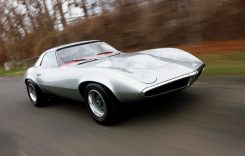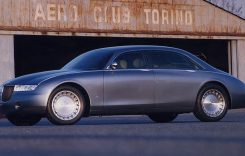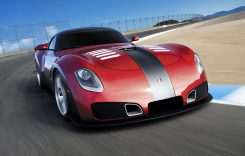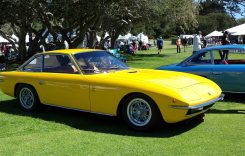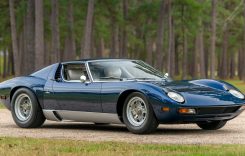
In MotoUSA’s track shootout, Ducati clearly closed the performance gap on the competition with its highly attractive 899 Panigale ($14,995). Featuring an giant 898cc V-Twin engine linked to an innovative chassis, and well-sorted electronics package, will the Panigale surprise us on the street as much as it did around the racetrack?
Set eyes on the Panigale and it’s clear designers hit a home run visually. Its lines are cleaner and less cluttered than both the Suzuki and MV, commanding attention in a way that the competition simply can’t replicate. From nose to tail there isn’t one thing we don’t like about the Ducati’s form.
Rolling the 899 on the scales, we were surprised that it weighs 10 pounds more than the Suzuki (437 pounds), and nine up on the MV, as it feels every bit as light as either bike—and even more so on the road. Seated at the controls the Ducati is lean and its controls are proportioned well, highlighted by a short reach to the extra wide clip-ons.
Despite having the tallest seat, it wasn’t an issue for our testers. On the other hand, its lack of padding was, which compromises an otherwise pleasing ergonomics—especially for a sportbike.
“You may think it’s a quite focused track bike,” says Northover. “[But] it’s a way better street bike than you’d think.”
(Top) The 899 is a relatively comfortable street mount aside from at times high levels of engine heat during extended slow speed riding. (Center) The Ducati’s electronics function well and we appreciate the steady improvements its making to its traction control. (Bottom) We love the sound and fast-revving character of the Ducati’s Twin. It was however the loudest in sound testing.
Through corners the Ducati is responsive and the most agile. The chassis is well connected with the road and offers a fair degree of stability, second only to the steadfast Suzuki.
“The chassis is so nimble but stable at the same time,” reveals the British moto-journalist. “Which is a real clever combination they’ve pulled off there.”
The suspension delivers a sporty, but not overly firm ride, and aside from the thin seat and radiating engine heat during extended idling through traffic, the Panigale is an agreeable mount.
“The chassis works really, really well,” he agrees. “It absorbs the bumps really well–something I found on track but the road as well. It’s quite happy on bumpy roads [and] keeps loads of stability.”
But not everything is sunshine and daisies with the Ducati as it can kick off considerable heat from its engine during extended idling or extreme slow speed maneuvers.
“There is so much heat coming up from the rear cylinder head that your groin is exposed to the intense sort of heat I can only imagine sitting on the sun to be like,” jokes Northover . “It’s funny, but not so funny when you’re cruising down the freeway through traffic and slowly cooking from the center out.”
The Panigale’s Digitek LCD display is easier to view than the F3’s and comparable to the GSX-R. It does, however, display more info than the bike from Japan, including fuel consumption and air temperature, . It also incorporates three engine power modes (Rain, Sport, Race), eight traction control settings, three ABS and engine braking control modes. Plus the ABS and traction control can be manually disabled, if desired.
Like the MV, there is plenty of room for improvement in terms of menu navigation and tactile function of the switchgear. But once you spend some time learning the process, it becomes less of a hassle. One complaint that remains is the dissimilarity between the TC, ABS, and EBC values, with ‘Level 1’ being the least intrusive within TC and ABS, but opposite of the EBC (see the ‘settings’ box for our optimum street set-up info). We do however appreciate the function of the EBC, as it does a fine job at masking the fact that the 899 isn’t outfitted with a slipper action clutch from the factory.
899 Panigale Settings
Suspension
Fork
Preload: 45 (clicks in)
Compression: 0.5 (turns out)
Rebound: 2.5
Shock
Preload: 15mm (exposed threads)
Compression: 0.5
Rebound: 5
Drivetrain
Power Mode: Race
DTC: 1
EBC: 3
ABS: Off or 1
In spite of its lower-spec Brembo braking calipers, we actually preferred the Ducati’s front brakes to the MV’s. It was also rated higher than the Gixxer. However, its back brake is lacking compared to both. Feel and power are both exceptional which helped it achieve the shortest stopping distance from 60 mph (ABS disabled). Even in its least intrusive setting (Level 1), we found the ABS to be a bit too forceful during fast paced canyon riding, but could see its benefit on wet roads, or urban streets. Fortunately, it’s easy to turn on/off, and we applaud Ducati for giving rider’s the option.
Taking into account the relatively giant engine capacity and V-Twin architecture, it shouldn’t be a surprise that the 899 is the torque king. It pumps out just over 65 lb-ft at 10,200 rpm, positioning it well ahead of the Suzuki (by almost 10 lb-ft) and 6.12 lb-ft up on the torque-rich F3.
It also faired well in measured horsepower reeling out nearly 130 horsepower at 10,700 revs. That’s only two down on the MV Agusta but almost five more than the Suzuki. Numbers aside, the Ducati doesn’t have as broad of a powerband as the competition. However, keep the motor revving on the boil and it’s highly effective.
(Top) The 899 Panigale comes equipped from the factory with an electronic quickshifter. And it’s needed in an effort to keep the Ducati’s top-end biased engine on the pipe. (Center) The 899 Panigale’s electronics are well-sorted and have the ability to make it easier to ride for less experienced riders or on unfamiliar roads. (Bottom) The Ducati’s braking hardware worked well and felt similar to the set-up employed on the MV. It was however rated one position behind the Ninja.
The Panigale’s factory-equipped quickshifter and close ratio gearing keep the engine revving where it needs to, but the setup isn’t as slick-shifting as the MV’s or the Suzuki’s aftermarket kit from Bazzaz.
We were impressed with the more refined action of the clutch, and its direct and well-sorted feeling ride-by-wire throttle. This made the Ducati incredibly easy to launch hard with it achieving the quickest 0-60 mph and quarter-mile acceleration, well ahead of the competition. But it also drinks the most fuel too, averaging 32.1 mpg. This nets a 144-mile useable range, ahead of the MV but a few miles shorter than the GSX-R.
Sound-wise we love the booming roar and snappy, quick-revving response of the Twin. While furious, it doesn’t sound as charming as the Triple. It will, however, generate the most attention, both good and bad, as its exhaust note is the loudest at idle and at speed. We also noted more engine vibration than the GSX-R but it wasn’t enough to annoy us or completely distort the view from the rear view mirrors.
Surprisingly, the quirks that limited the Ducati on track were masked on the road. Although high strung, we loved the sound, torque, and quick-revving nature of the engine. It handles high-performance street riding with ease, yet the suspension is obedient and didn’t beat us up on the highway. An improved rider interface, along with an array of electronics made the Panigale easier to ride for all our test riders. Although it isn’t the cheapest, it is the fastest and prettiest, and winner of this year’s street shootout—a first for Ducati.
Ducati 899 Panigale Highs & Lows
Highs
- Feels light, handles nimbly with great stability
- Electronics are helpful and well-integrated
- Looks obscene and sounds like it, too
Lows
- Seat could be thicker
- Cockpit can get warm idling through traffic
- Narrow powerband demands focused riding

